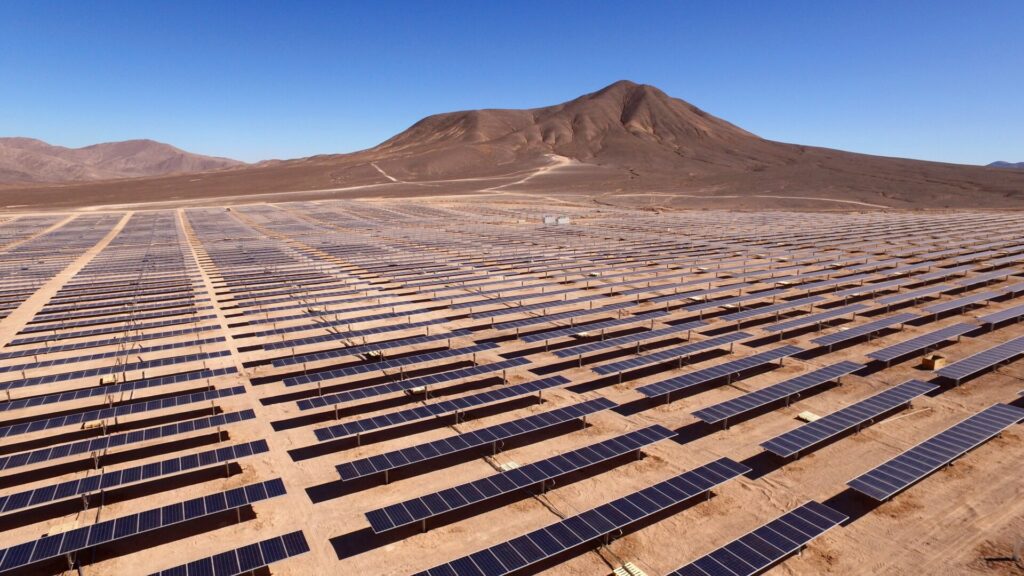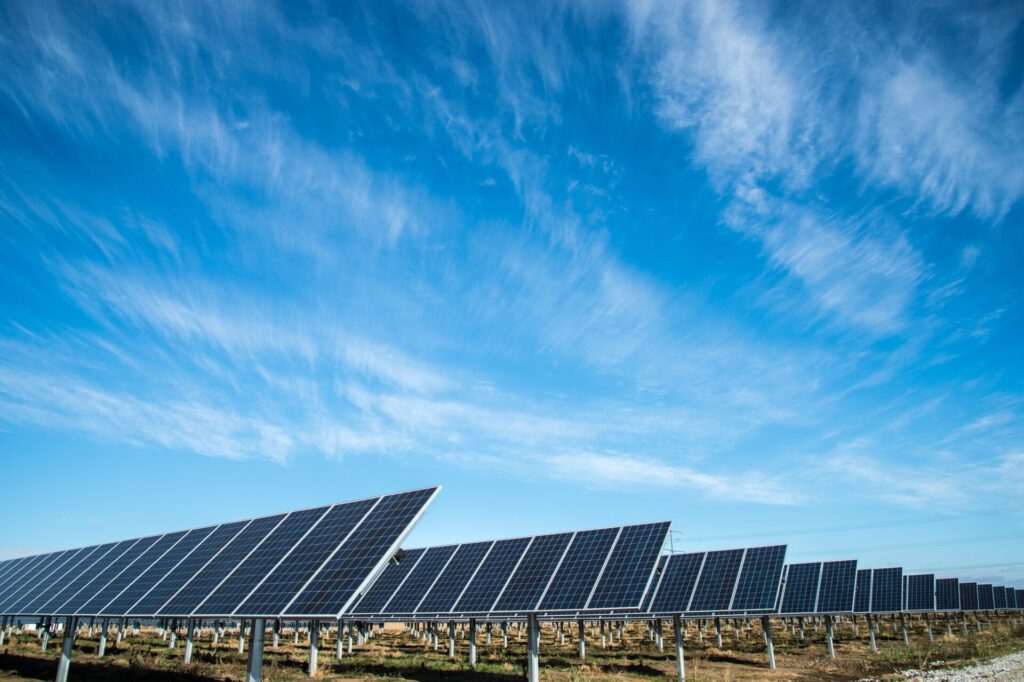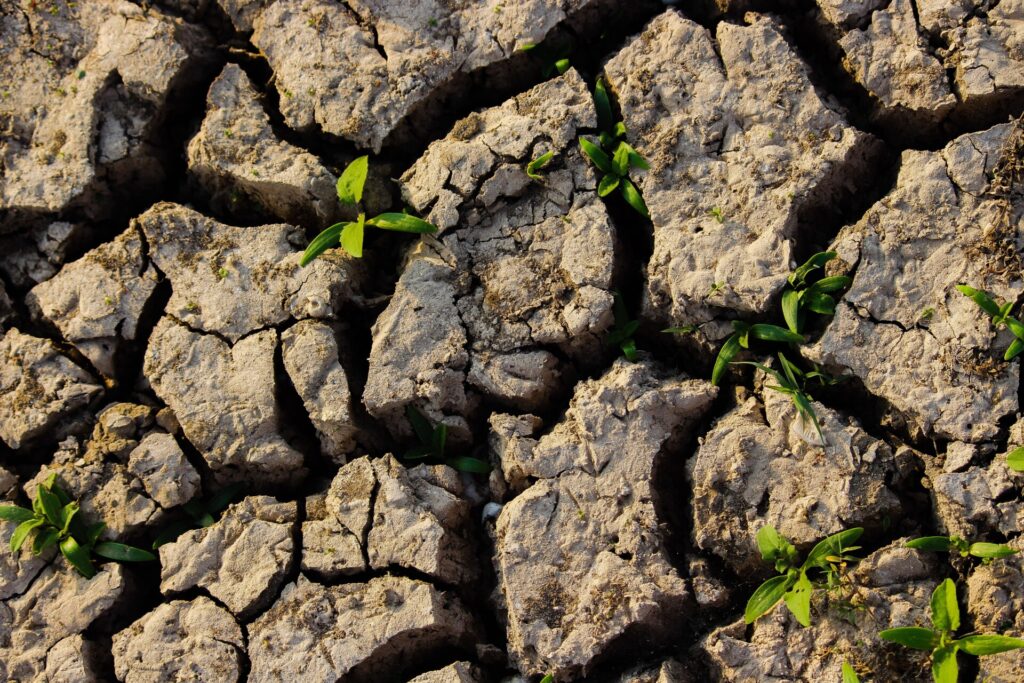Are you considering setting up a solar farm? While solar energy is an eco-friendly and cost-effective solution, there are common land requirement blunders that can hinder optimal energy efficiency. In this article, we will explore three mistakes people make with solar farm land requirements.
Firstly, choosing the wrong location can significantly impact the efficiency of your solar farm. Factors like shade from nearby trees or buildings, the angle and orientation of the land, and the proximity to electrical infrastructure all play a crucial role in maximizing energy production.
Secondly, inadequate land size can limit the potential of your solar farm. It’s essential to accurately assess the energy needs of your site and ensure you have enough space to accommodate the required number of solar panels. This will prevent overcrowding and ensure efficient energy generation.
Lastly, neglecting proper land preparation can lead to long-term problems. Issues like uneven ground, poor drainage, or improper soil quality can reduce the lifespan of your solar farm and hinder energy production.
By avoiding these common land requirement blunders, you can optimize the energy efficiency of your solar farm and maximize its ROI. Let’s dive deeper into each blunder and discuss practical solutions for a successful solar farm setup.

The importance of proper solar farm land requirements
Setting up a solar farm requires careful consideration of various factors to ensure maximum energy efficiency. One of the crucial aspects is selecting the right piece of land. The location, size, and condition of the land play a significant role in the overall performance of the solar farm.
Solar farms rely on sunlight exposure to generate electricity, making it essential to choose a location with ample sunlight. Factors such as shade from nearby trees or buildings can significantly impact the efficiency of the solar panels. Therefore, it’s crucial to select a site that offers unobstructed access to sunlight throughout the day.
Another important consideration is the angle and orientation of the land. Solar panels typically perform best when facing south, as this maximizes their exposure to the sun. Additionally, the land should be free from any obstructions that could cast shadows on the panels, such as tall structures or hills.
Proximity to electrical infrastructure is also crucial for efficient energy production. Connecting the solar farm to the grid should be convenient and cost-effective. If the land is far from existing electrical infrastructure, the installation costs may increase significantly, affecting the overall viability of the project.
By carefully assessing these factors and selecting a suitable piece of land, you can lay the foundation for a highly efficient solar farm.

Common mistakes in solar farm land selection
Despite the importance of proper land selection, many solar farm developers make common mistakes that can compromise the energy efficiency of their projects. Let’s take a closer look at three of these blunders and understand their implications.
Mistake 1: Inadequate sunlight exposure
One of the most common mistakes in solar farm land selection is choosing a location with inadequate sunlight exposure. This blunder can significantly reduce the overall energy production of the solar farm. When solar panels receive less sunlight, they generate less electricity, leading to a lower return on investment.
To avoid this blunder, it’s crucial to conduct a thorough analysis of the site’s sunlight exposure. Factors such as the presence of trees, buildings, or other structures that could cast shadows should be carefully evaluated. Additionally, considering the local climate and weather patterns can help determine the potential sunlight availability throughout the year.
Mistake 2: Poor soil quality and drainage
The quality of the land’s soil and its drainage capabilities are often overlooked in the solar farm development process. However, poor soil quality and inadequate drainage can lead to long-term problems that affect energy efficiency.
Solar farms require a stable foundation to support the weight of the panels and ensure their proper alignment. If the soil quality is poor or the land is prone to erosion, it can compromise the stability of the solar panel mounting system. This can result in misalignment of the panels, reducing their overall efficiency.
Similarly, inadequate drainage can lead to water pooling around the solar panels, causing damage and reducing their performance. Proper land preparation, including grading and ensuring adequate drainage systems, is essential to prevent these issues.
Mistake 3: Insufficient land size
Another common blunder is underestimating the required land size for a solar farm. Inadequate space can lead to overcrowding of solar panels, reducing their efficiency and hindering maintenance activities. Additionally, a lack of space can limit the potential for future expansion, limiting the overall energy generation capacity of the solar farm.
To avoid this blunder, it’s important to accurately assess the energy needs of the site and consider any future growth plans. Adequate space should be allocated for the solar panels, access roads, and other necessary infrastructure. This will ensure a well-designed layout that allows for efficient energy production and convenient maintenance.

Mistake 1: Inadequate sunlight exposure
Now that we understand the common land requirement blunders, let’s explore some practical solutions to avoid them and set up a successful solar farm.
Conducting a thorough site assessment
Before finalizing a piece of land for your solar farm, it’s crucial to conduct a thorough site assessment. This assessment should include an analysis of the sunlight exposure, soil quality, drainage capabilities, and land size requirements. Consulting with experts in solar farm development can help ensure a comprehensive evaluation and identify any potential issues.
Consulting with experts in solar farm development
Solar farm development is a complex process that requires expertise in various areas, including engineering, design, and project management. Consulting with professionals who specialize in solar farm development can provide valuable insights and guidance to avoid common land requirement blunders. These experts can help assess the land’s suitability, design an efficient layout, and ensure compliance with local regulations.
Considering the long-term sustainability of the land
When selecting a piece of land for your solar farm, it’s essential to consider its long-term sustainability. Factors such as land ownership, potential for future expansion, and environmental impact should be carefully evaluated. Choosing a location with long-term viability will ensure the ongoing success and profitability of your solar farm.

Mistake 2: Poor soil quality and drainage
Setting up a solar farm requires careful consideration of the land requirements to ensure optimal energy efficiency. By avoiding common land requirement blunders such as inadequate sunlight exposure, poor soil quality and drainage, and insufficient land size, you can maximize the energy production and return on investment of your solar farm. Conducting a thorough site assessment, consulting with experts, and considering the long-term sustainability of the land are essential steps in setting up a successful solar farm. With proper planning and attention to detail, you can contribute to a greener future while reaping the benefits of solar energy.
Mistake 3: Insufficient land size
Choosing the wrong location can significantly impact the efficiency of your solar farm. Factors like shade from nearby trees or buildings, the angle and orientation of the land, and the proximity to electrical infrastructure all play a crucial role in maximizing energy production.
When selecting a location for your solar farm, it’s essential to take into account the amount of sunlight that the land receives throughout the day. Ideally, your solar panels should be exposed to direct sunlight from sunrise to sunset. If your land is shaded for a significant portion of the day, it can significantly reduce the amount of energy produced.
Another factor to consider is the angle and orientation of your land. The angle of your solar panels should be optimized to capture the maximum amount of sunlight. Generally, solar panels should be angled at the same degree as the latitude of your location. Additionally, the panels should face south in the northern hemisphere and north in the southern hemisphere.
Proximity to electrical infrastructure is another critical consideration when selecting a location for your solar farm. Being close to existing electrical infrastructure can reduce the cost of connecting your solar farm to the grid. On the other hand, being too far away can increase the cost of installation and maintenance.
To avoid this blunder, it’s crucial to conduct a thorough site assessment to ensure that your location is suitable for a solar farm. Consulting with experts in solar farm development can also help you make informed decisions about the best location for your solar farm.
How to avoid these land requirement blunders
Neglecting proper land preparation can lead to long-term problems. Issues like uneven ground, poor drainage, or improper soil quality can reduce the lifespan of your solar farm and hinder energy production.
Solar panels require a stable and level surface to be installed on. If the land is uneven or has a steep slope, it can make it challenging to install solar panels correctly. Additionally, poor drainage can cause water to pool around the panels, which can lead to damage and reduce their lifespan.
The quality of the soil is another crucial consideration when setting up a solar farm. Soil that is too acidic or alkaline can affect the performance of your solar panels. Additionally, soil that is prone to erosion can lead to stability issues with your solar panels.
To avoid this blunder, it’s important to ensure that your land is properly prepared before installing your solar panels. This can involve grading the land to ensure that it is level and installing proper drainage to prevent water from pooling around your solar panels. Conducting a soil test can also help you determine if the quality of your soil is suitable for a solar farm.

Conducting a thorough site assessment
Inadequate land size can limit the potential of your solar farm. It’s essential to accurately assess the energy needs of your site and ensure you have enough space to accommodate the required number of solar panels. This will prevent overcrowding and ensure efficient energy generation.
The amount of land required for a solar farm depends on several factors, including the energy demands of your site and the efficiency of your solar panels. If you have a large energy demand, you will need more solar panels to generate enough energy. Additionally, if your solar panels are less efficient, you will need more panels to achieve the same output.
Overcrowding your solar panels can reduce the amount of energy they produce, as they will cast shadows on each other. This can significantly reduce the efficiency of your solar farm and lead to a reduction in energy output.
To avoid this blunder, it’s crucial to accurately assess your energy needs and determine how many solar panels you will need to meet those needs. Consulting with experts in solar farm development can help you determine the optimal size for your solar farm based on your energy demands and the efficiency of your solar panels.
Considering the long-term sustainability of the land
Setting up a solar farm can be a cost-effective and eco-friendly solution for your energy needs. However, common land requirement blunders can hinder optimal energy efficiency. By avoiding these blunders, you can optimize the energy efficiency of your solar farm and maximize its ROI. Conduct a thorough site assessment, consult with experts in solar farm development, and consider the long-term sustainability of your land to ensure a successful solar farm setup.
Conclusion
Firstly, choosing the wrong location can significantly impact the efficiency of your solar farm. Factors like shade from nearby trees or buildings, the angle and orientation of the land, and the proximity to electrical infrastructure all play a crucial role in maximizing energy production.
When selecting a location for your solar farm, it’s essential to consider the amount of sunlight the area receives throughout the year. Ideally, you want a site with minimal shade to ensure maximum exposure to sunlight. Conducting a thorough shading analysis can help you determine if there are any obstructions that could hinder energy production.
Another critical aspect to consider is the angle and orientation of the land. Solar panels are most efficient when they are facing south in the northern hemisphere and north in the southern hemisphere. Additionally, the tilt angle should be optimized to capture the maximum amount of sunlight. Consulting with solar experts or using solar design software can help you determine the ideal tilt angle for your specific location.
Proximity to electrical infrastructure is also crucial for efficient energy production. If the solar farm is far from existing electrical lines, you may incur significant costs in connecting your solar farm to the grid. Being close to electrical infrastructure can help minimize these costs and ensure a smooth connection.
By carefully considering these factors when choosing the location for your solar farm, you can maximize energy efficiency and optimize your solar farm’s performance.